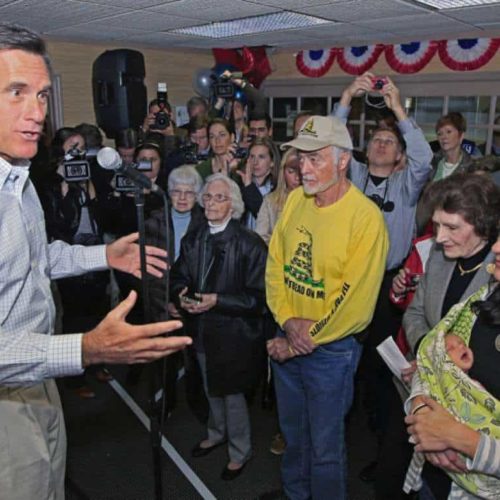Introduction

The Obama administration has defended its decision to allow Fisker Automotive to assemble its high concept electric sports sedan, the Karma, in Finland, even though U.S. taxpayers had made a major investment in the car’s development — saying none of the American money was spent on the car’s overseas assembly.
But Republican critics this weekend challenged the administration’s explanation, saying federal loans should have only supported applicants who would be building their cars on American soil.
“The Department of Energy and Fisker executives are splitting hairs about where the money went,” said Rep. Tim Murphy, a Pennsylvania Republican who sits on the House committee that has been investigating the Obama Administration’s “green energy” loan program. “Ultimately, American taxpayer dollars went to a Finnish automaker to build high-end luxury automobiles for Hollywood.”
The criticism came on the heels of online reports published Thursday by ABCNews.com in partnership with the Center for Public Integrity’s iWatch News, and a Friday report on ABC News’ “Good Morning America” about Fisker Automotive, the recipient of a “green energy” loan in 2010. The reports quoted auto industry experts who said Fisker’s loan invited comparisons to the ill-fated Energy Department loan to Solyndra, because delays and obstacles have hampered progress on the luxury electric car, called the Karma. Solyndra, a solar panel manufacturer that received $535 million in taxpayer support, declared bankruptcy earlier this year. That federal loan is now the subject of investigations by the Justice Department and by inspectors general from the Energy and Treasury departments.
On Saturday, The Washington Post followed with the discovery that the Energy Department quietly eased expectations for Fisker’s projected car sales volume after it conditionally approved the loan, and made allowances for scaling back projections in the final loan agreement.
Both the automaker and the Obama administration spent the past few days trying to head off the Solyndra comparisons. They defended the administration’s effort to give a boost to start-up companies in the alternative energy sector. And they sought to clarify the decision to allow the loan to be approved even after the company had announced its decision to build the Karma in Finland. While the Department of Energy did set aside about $170 million to finance the development of the Karma, they said, the deal included an agreement stating that none of that money would be spent on the assembly of the car, which was to occur at the overseas factory. They also noted the promise of a second line of cars, which would eventually be assembled by U.S. workers at a shuttered GM plant in Delaware.
“Not a single dollar of the [Department of Energy] DoE loans has been, or will be, spent outside of America,” a statement from Fisker spokesman Roger Ormisher said. “All expenditures are reviewed by [PriceWaterhouseCoopers] on behalf of the DoE.” Press Secretary Jay Carney told ABC News White House Correspondent Jake Tapper Friday that the funds provided to Fisker “are not being used, as I believe the CEO said to ABC, are not being used for its facility in Finland.”
“There are already jobs on the ground in the United States both directly at the plant in Wilmington [Delaware] and at the headquarters on the West Coast,” Carney said. “The model that is being built in Finland, relies on suppliers and others here in the United States before it is manufactured … This company is doing exactly what it said it would do.”
Some of Obama’s political opponents appeared unsatisfied with the explanation that the tax money would be used only on work on the Karma performed in the U.S.
“I’m sure the millions of unemployed workers in every state will want to learn why the Obama administration gave half a billion dollars to finance ‘green’ cars built in Finland,” wrote Sarah Palin, in a Facebook post.
On the campaign trail Friday, former Massachusetts Gov. Mitt Romney also questioned the $529 million loan to Fisker, a company that is being financed in part by a Silicon Valley venture capital firm that has Al Gore as a board member.
“I believe in free enterprise, not in crony capitalism,” Romney said. Fisker says the work in Finland is being supported by some of the $600 million in private financing the company has raised. The company’s founder, Henrik Fisker, told ABC News that the car could not have been built without the U.S. government assistance. “I wouldn’t sit here today with a finished car and with this much being done without that loan,” Fisker said.The company’s statement also noted that it has created hundreds of jobs in the U.S. for the purpose of designing, engineering and marketing the car, and to supply parts. Though in the statement, the company appeared to suggest that fewer than half of the parts for the car were actually coming from American suppliers. “More than 45 percent of the components of the Fisker Karma sedan are manufactured by approximately 40 suppliers located in the U.S.,” it said.
As it worked to answer questions about its decision to assemble the Karma in Finland, Fisker executives were also trying to explain the long awaited conclusions of the Environmental Protection Agency, which certified the car last week. In its fuel efficiency ratings, the EPA said the Karma would get only 20 miles per gallon when drivers engage its gasoline engine. (The EPA found the electric engine has a range of about 32 miles before losing its charge, though Fisker estimates that range at closer to 50 miles.)
The Karma’s gasoline engine, incidentally, was purchased from General Motors and is American made.
Read more in Money and Democracy
Money and Democracy
‘Nonpartisan’ youth movement has deep GOP roots
Organization accused of being right-wing front group
Money and Democracy
Fine line between politics and issues spending by secretive 501(c)(4) groups
Only 65 501(c)(4) organizations reported spending in 2010. U.S. campaign disclosure system is “on shaky ground,” watchdog Sheila Krumholz says.

Join the conversation
Show Comments